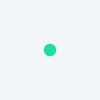Best answer by john_shearer
View originalWhat do the residual and Q-Q plots show?
I'm running a regression in Stats iQ and I don't understand my diagnostic plots. What do the residual and Q-Q plots show?
Userlevel 1
Hi Goldie. I don't have a lot of experience yet in StatsiQ, but do have some understanding of regression.
Looking at the outputs it looks like you get:
Predicted v Actual - this just shows how well the regression equation actually predicts the values you have in your data. here you're ideally looking for your data points to be closely clustered around a straight line (sloping up or down depending on the relationship).
Residuals - this shows the predicted value (based on the regression equation) on the X axis, and the residuals on the Y axis. The residuals are essentially the difference between the predicted value and the actual value (i.e. the 'error' in your predicted value) .
Essentially when you look at this plot, you want the points to be in a pretty 'random' cloud pattern - ideally clustered close to the zero line (i.e. smaller residuals). What you don't want is any clear pattern where the residuals either increase/decrease in line with your predicted value. Or any pattern where the residuals appear non-linear (a U or upside down U shape).
Also watch for outliers - points that are far from the general pattern of data points - as these can be influential in impacting the regression equation.
Normal Q-Q Plot: This is used to assess if your residuals are normally distributed. basically what you are looking for here is the data points closely following the straight line at a 45% angle upwards (left to right). Again what to watch here is any patterns that deviate from this - particularly anything that looks curvilinear (bending at either end) or s shaped.
This page on the Qualtrics support is actually pretty good:
https://www.qualtrics.com/support/stats-iq/analyses/regression-guides/interpreting-residual-plots-improve-regression/
Hope this helps!
Looking at the outputs it looks like you get:
Predicted v Actual - this just shows how well the regression equation actually predicts the values you have in your data. here you're ideally looking for your data points to be closely clustered around a straight line (sloping up or down depending on the relationship).
Residuals - this shows the predicted value (based on the regression equation) on the X axis, and the residuals on the Y axis. The residuals are essentially the difference between the predicted value and the actual value (i.e. the 'error' in your predicted value) .
Essentially when you look at this plot, you want the points to be in a pretty 'random' cloud pattern - ideally clustered close to the zero line (i.e. smaller residuals). What you don't want is any clear pattern where the residuals either increase/decrease in line with your predicted value. Or any pattern where the residuals appear non-linear (a U or upside down U shape).
Also watch for outliers - points that are far from the general pattern of data points - as these can be influential in impacting the regression equation.
Normal Q-Q Plot: This is used to assess if your residuals are normally distributed. basically what you are looking for here is the data points closely following the straight line at a 45% angle upwards (left to right). Again what to watch here is any patterns that deviate from this - particularly anything that looks curvilinear (bending at either end) or s shaped.
This page on the Qualtrics support is actually pretty good:
https://www.qualtrics.com/support/stats-iq/analyses/regression-guides/interpreting-residual-plots-improve-regression/
Hope this helps!
@john_shearer That's super helpful. Thank you!
I haven't used Stats iQ before but this is general information about residual and Q-Q plots:
Residual plots and Q-Q plots are used to visually check that your data meets the homoscedasticity and normality assumptions of linear regression.
A residual plot lets you see if your data appears homoscedastic. Homoscedasticity means that the residuals, the difference between the observed value and the predicted value, are equal across all values of your predictor variable. If your data are homoscedastic then you will see the points randomly scattered around the x axis. If they are not (e.g. if they form a curve, bowtie, fan etc.) then it suggests that your data doesn't meet the assumption.
Q-Q plots let you check that the data meet the assumption of normality. They compare the distribution of your data to a normal distribution by plotting the quartiles of your data against the quartiles of a normal distribution. If your data are normally distributed then they should form an approximately straight line. (see http://data.library.virginia.edu/understanding-q-q-plots/ for more information)
Residual plots and Q-Q plots are used to visually check that your data meets the homoscedasticity and normality assumptions of linear regression.
A residual plot lets you see if your data appears homoscedastic. Homoscedasticity means that the residuals, the difference between the observed value and the predicted value, are equal across all values of your predictor variable. If your data are homoscedastic then you will see the points randomly scattered around the x axis. If they are not (e.g. if they form a curve, bowtie, fan etc.) then it suggests that your data doesn't meet the assumption.
Q-Q plots let you check that the data meet the assumption of normality. They compare the distribution of your data to a normal distribution by plotting the quartiles of your data against the quartiles of a normal distribution. If your data are normally distributed then they should form an approximately straight line. (see http://data.library.virginia.edu/understanding-q-q-plots/ for more information)
Leave a Reply
Enter your username or e-mail address. We'll send you an e-mail with instructions to reset your password.




